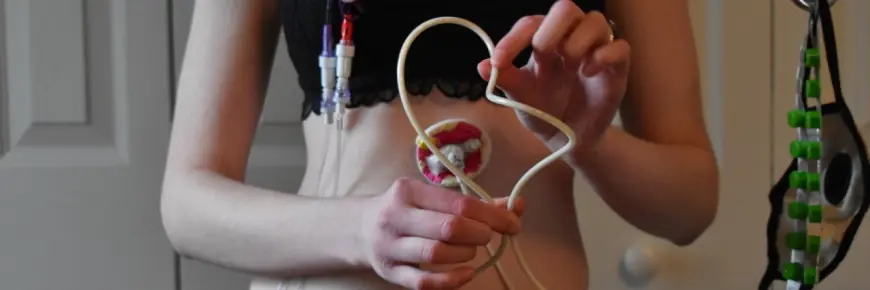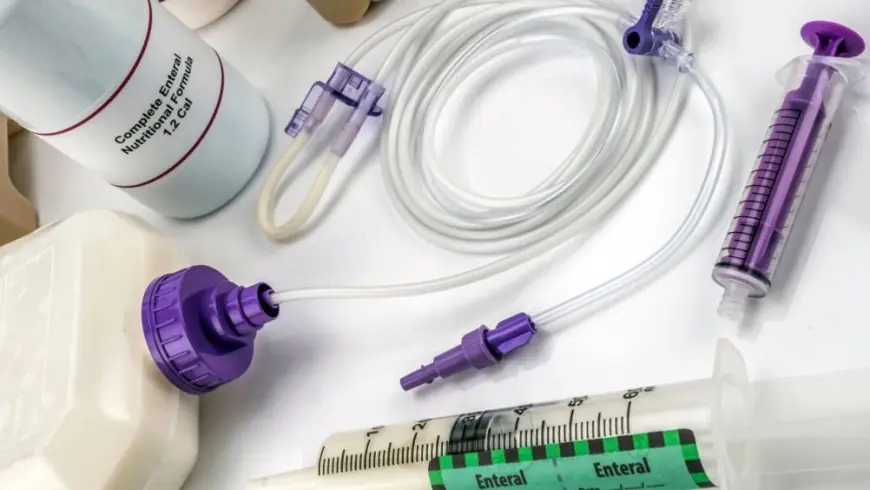What age is safe for tube feeding at home?
Tube feeding at home in Dubai helps replenish your body with essential nutrients and enhance your overall well-being.

Tube feeding, also known as enteral nutrition, is a medical method of delivering nutrition directly into the stomach or small intestine when someone is unable to eat or drink enough by mouth. It can be a vital lifeline for individuals of different age groups — from infants to the elderly — who need support due to medical conditions, surgeries, or chronic illnesses. However, one question often arises: What age is safe for tube feeding at home? The answer isn’t as straightforward as naming a specific number; instead, it depends on the person’s health status, support system, and the type of tube feeding involved. In places like Tube Feeding at home in Dubai, the focus is often on safety, proper training, and ongoing care for all age groups.
Tube Feeding in Infants and Children
Infants and children can require tube feeding for a variety of reasons, such as congenital conditions, premature birth complications, swallowing difficulties, or certain chronic illnesses. While hospitals typically initiate tube feeding under medical supervision, many children transition to home tube feeding once their families receive proper training.
For babies and younger children, safety depends heavily on the caregiver’s ability to follow feeding instructions accurately. Parents or guardians are usually trained to clean the tube site, prepare the nutrition formula, and monitor for signs of discomfort or infection. Because young children cannot always verbalize their symptoms, extra attention is necessary to detect changes in behavior or feeding tolerance.
Teenagers and Young Adults
For teenagers, tube feeding at home can be safe as long as they or their caregivers can manage the daily routine. In some cases, teens can even participate in their own care by flushing the tube, preparing feeds, or managing feeding pumps. The advantage in this age group is better communication — they can express discomfort or problems more easily compared to younger children. However, emotional and psychological support is crucial, as teens may struggle with body image issues or social concerns related to tube feeding.
Adults and Middle-Aged Patients
Adults who require tube feeding often adapt quickly once they understand the procedure. This age group generally benefits from having more independence and the ability to self-administer feeds when physically able. Safety at home depends on following hygiene protocols, monitoring tube placement (especially for nasogastric tubes), and watching for complications like blockages or infections.
Adults with chronic conditions, such as neurological disorders or digestive issues, can often maintain their health at home with regular follow-ups and a reliable support network.
Elderly Patients
Older adults are another group that may benefit from tube feeding at home, especially when oral intake is not possible due to stroke, dementia, or other health issues. However, safety for elderly individuals depends on several factors:
-
Cognitive ability: Some older adults may forget or resist tube care.
-
Physical limitations: Conditions like arthritis can make self-care difficult.
-
Medical complexity: Elderly patients may have multiple conditions requiring close monitoring.
In these cases, a dedicated caregiver — whether a family member or trained home nurse — ensures the feeding process remains safe and comfortable.
Factors That Determine Safety Across All Ages
Regardless of age, certain factors are essential to make tube feeding safe at home:
-
Training – Caregivers and patients should be educated on cleaning, feeding schedules, and troubleshooting.
-
Hygiene – Proper sanitization of equipment prevents infections.
-
Monitoring – Watch for signs of discomfort, leakage, redness, or swelling.
-
Follow-up care – Regular medical check-ins ensure the feeding plan remains effective.
-
Emotional support – Tube feeding can be an emotional adjustment, and reassurance plays a key role in overall well-being.

The Role of Family and Caregivers
A strong support system is often the deciding factor in whether tube feeding is safe at home. For infants and children, parents take the lead. For elderly individuals, adult children or trained caregivers often step in. Across all age groups, success relies on someone being present to manage the feeding schedule, maintain cleanliness, and respond promptly if problems arise.
Myths About Tube Feeding and Age
One common misconception is that tube feeding is only for the elderly or severely ill. In reality, people of any age can need it temporarily or long-term. Another myth is that home tube feeding is too complex for non-medical individuals to manage — but with proper training and support, families successfully handle tube feeding for children, adults, and seniors alike.
Making the Transition from Hospital to Home
The move from hospital-based tube feeding to home care is often a gradual process. Hospitals typically ensure that caregivers are confident in the procedures before discharge. This includes demonstrations, practice sessions, and written instructions. Once at home, ongoing communication with healthcare providers ensures any concerns are addressed early.
Conclusion
There is no single “safe age” for tube feeding at home — the real measure of safety lies in the quality of care, training, and monitoring provided. From newborns to the elderly, individuals can thrive with home tube feeding when proper steps are taken to ensure comfort, nutrition, and hygiene. Whether the patient is a small child, an active teenager, a working adult, or a senior citizen, the focus should always be on adapting the care process to the individual’s needs and abilities. This is why Tube Feeding at home Dubai is often tailored with flexibility, ensuring that patients of all ages receive safe and effective nutritional support in the comfort of their own homes.
What's Your Reaction?
 Like
0
Like
0
 Dislike
0
Dislike
0
 Love
0
Love
0
 Funny
0
Funny
0
 Angry
0
Angry
0
 Sad
0
Sad
0
 Wow
0
Wow
0


















































